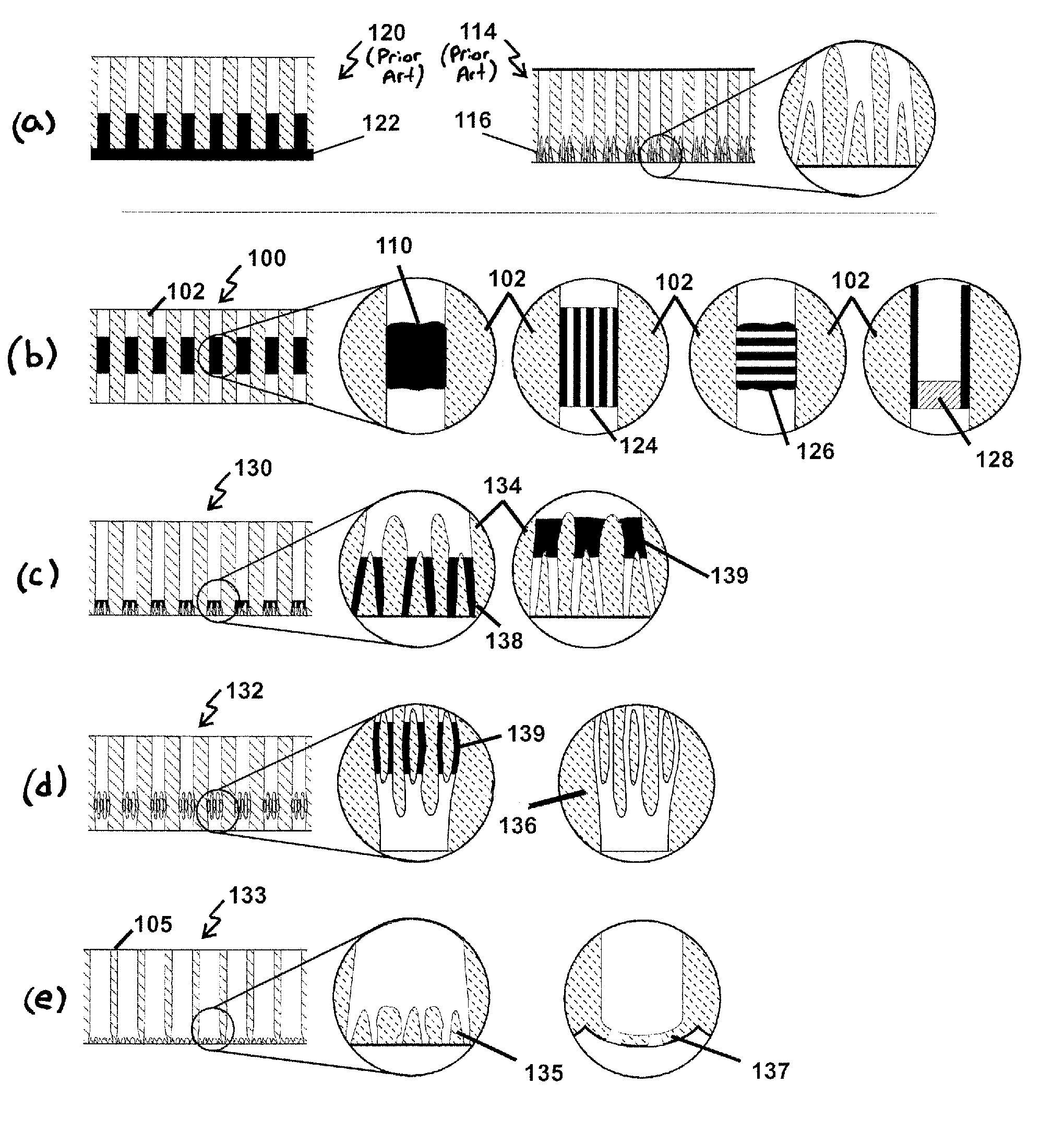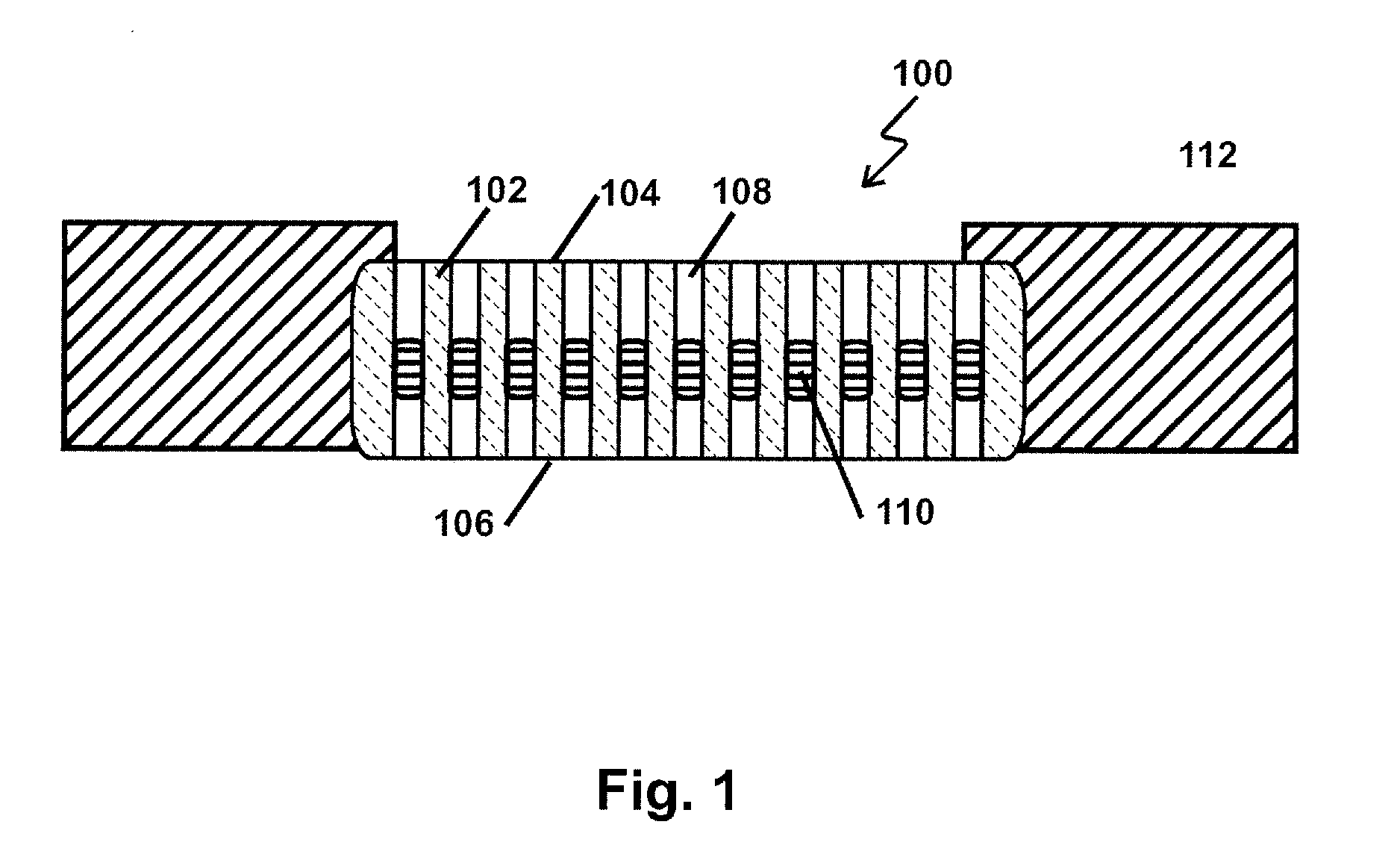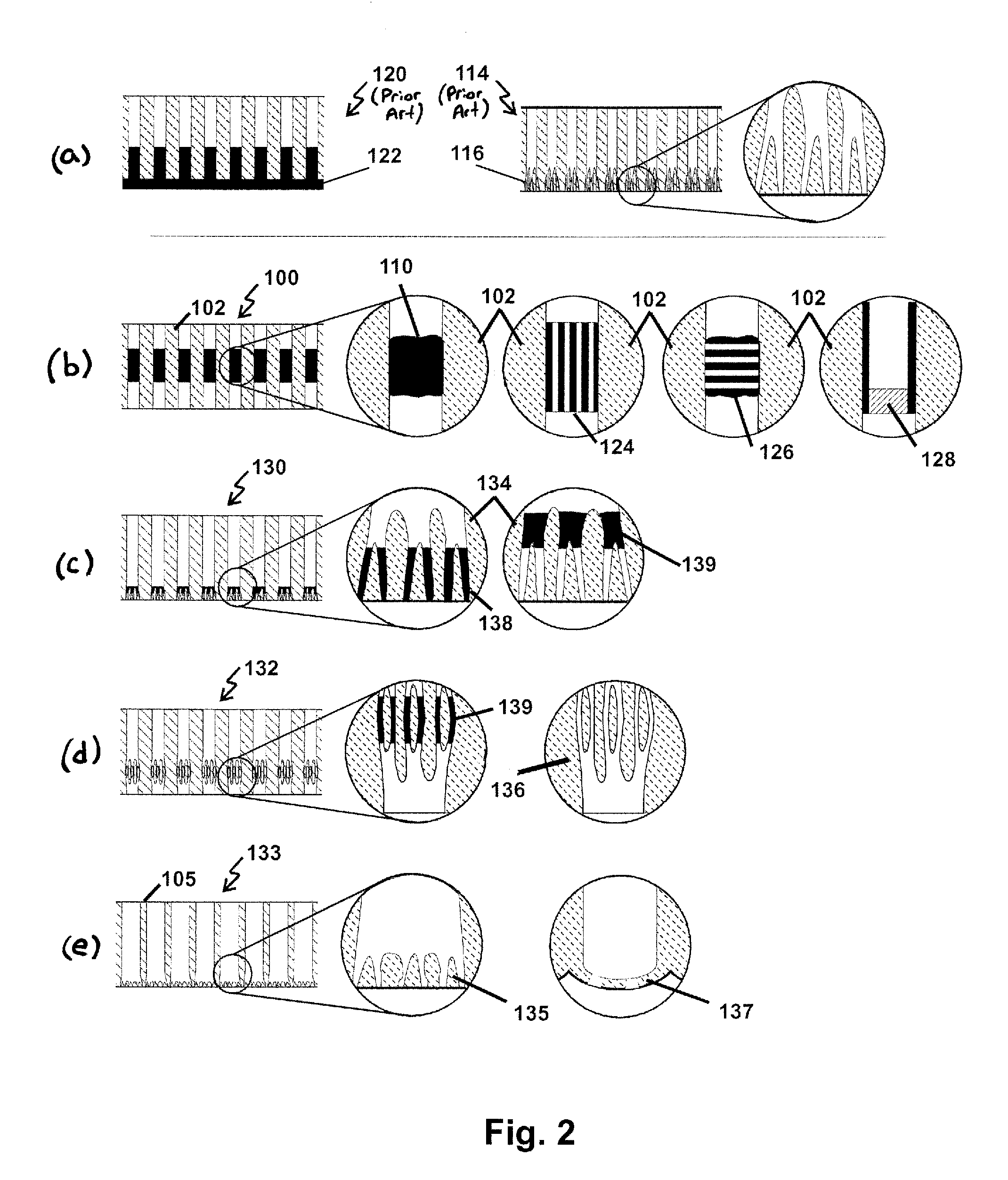Methods for making membranes based on anodic aluminum oxide structures
- Summary
- Abstract
- Description
- Claims
- Application Information
AI Technical Summary
Benefits of technology
Problems solved by technology
Method used
Image
Examples
example 1
Free-Standing AAO Structures
[0128]AAO structures are formed by anodizing 99.99% pure Al foil that is rolled and pressure-annealed at 350° C. and 5,000 psi for 20 min. The resulting Al foil is cleaned and anodized on both sides in 1% oxalic acid electrolyte at a temperature of 10° C. and an anodization current density of 10 mA / cm2, until a charge density of 20 C / cm2 is accumulated. The resulting layer of aluminum oxide is then etched out using a hot solution of 200 g / l chromic oxide in 50% phosphoric acid, the Al substrate is rinsed and dried, and an adhesion layer of 0.5 μm of AAO is grown using the same conditions.
[0129]Conventional photoresist is applied to both sides of the Al substrate, is soft-baked at 90° C. for 20 min and is exposed to a UV light using a mask with the openings of required size and format to define the number, the location, the size and the format of the membranes—in this case, four 25 mm circular membranes on each side of a 70 mm×70 mm substrate. Final anodiz...
example 2
AAO Structure with Large Pore Period and Pore Diameter
[0132]Al substrates are prepared as noted in Example 1, except that after forming an adhesion layer of 0.5 μm of porous AAO and applying photoresist mask, the adhesion layer in the exposed area is etched out using a hot solution of 200 g / l chromic oxide in 50% phosphoric acid, the Al substrate is rinsed and the substrate is placed in a non-pore-forming electrolyte (0.1 M boric acid), to form a dense layer of alumina at a voltage equal or lower than the final anodization voltage, but no less that 25% of the final anodization voltage. This dense layer is required to achieve the final anodization voltage rapidly in the beginning of the final anodization step, and ensures the creation if the required pore period throughout the entire AAO structure.
[0133]Final anodization is carried out in a high voltage electrolyte (1% oxalic acid with one of the additives listed in Table 1) at a temperature of 0° C. to 2° C. and an anodization volta...
example 3
AAO Membranes with an Al Rim
[0134]AAO support structures are produced using Al foil prepared and patterned as described in Example 1, except only one side of the Al substrate is anodized. Anodization is carried out in 3% oxalic acid electrolyte at a temperature of 12° C. and an anodization voltage of 40V until a charge density of 200 C / cm2 is accumulated, resulting in 100 μm thick AAO structures with 37 nm pores. With some Al substrates, voltage reduction profile #2 (FIG. 6(a)) is used to bring the anodization voltage down to 4 V, and anodization is continued for 100 seconds at 4V. The resulting asymmetric AAO structure has a final pore channel diameter of about 5 nm.
[0135]The resulting AAO structures, which are still attached to Al, are masked with 3M electroplating tape to define 8 mm circles in the center of the 13 mm structures. The barrier layer in the exposed area is breached in a solution of concentrated hydrochloric acid at −2° C. by slow ramping of the cathodic potential un...
PUM
| Property | Measurement | Unit |
|---|---|---|
| Pore size | aaaaa | aaaaa |
| Pore size | aaaaa | aaaaa |
| Pore size | aaaaa | aaaaa |
Abstract
Description
Claims
Application Information
 Login to View More
Login to View More - R&D
- Intellectual Property
- Life Sciences
- Materials
- Tech Scout
- Unparalleled Data Quality
- Higher Quality Content
- 60% Fewer Hallucinations
Browse by: Latest US Patents, China's latest patents, Technical Efficacy Thesaurus, Application Domain, Technology Topic, Popular Technical Reports.
© 2025 PatSnap. All rights reserved.Legal|Privacy policy|Modern Slavery Act Transparency Statement|Sitemap|About US| Contact US: help@patsnap.com



